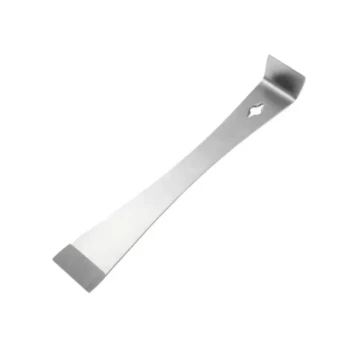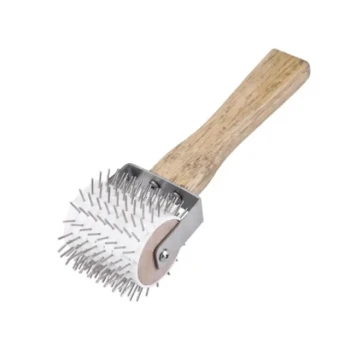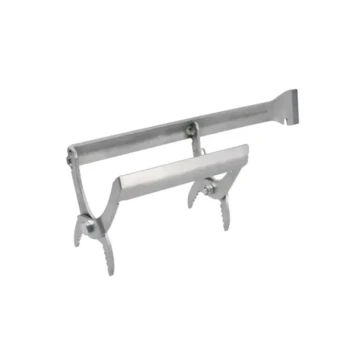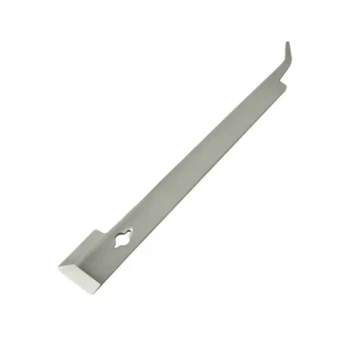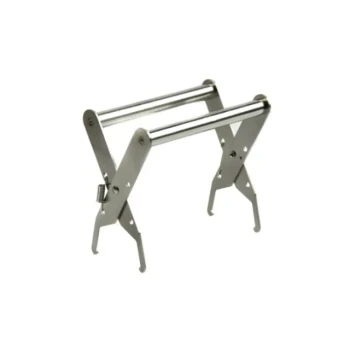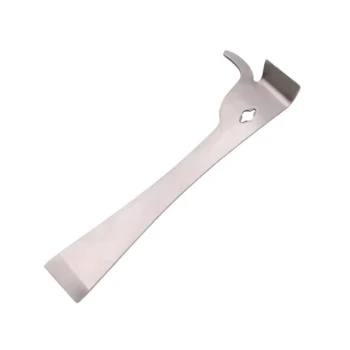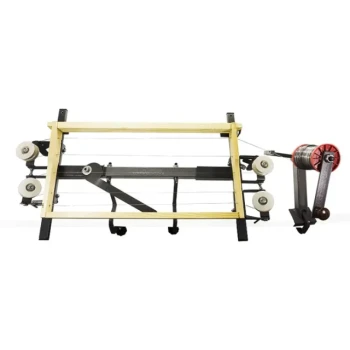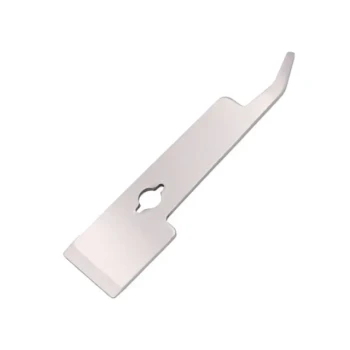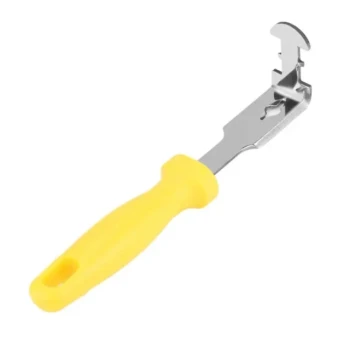By far, the most effective and widely recommended method for applying wax to bee frames is using a disposable foam paint brush. This technique gives you precise control, ensuring you apply wax to the embossed ridges of the foundation without filling the cell bottoms, which is critical for encouraging bees to build comb.
The core principle of waxing frames is not to saturate the foundation, but to apply a thin, strategic layer of beeswax onto the raised cell edges. This acts as a scent-based guide and structural starting point for the bees, encouraging them to quickly draw out the comb.
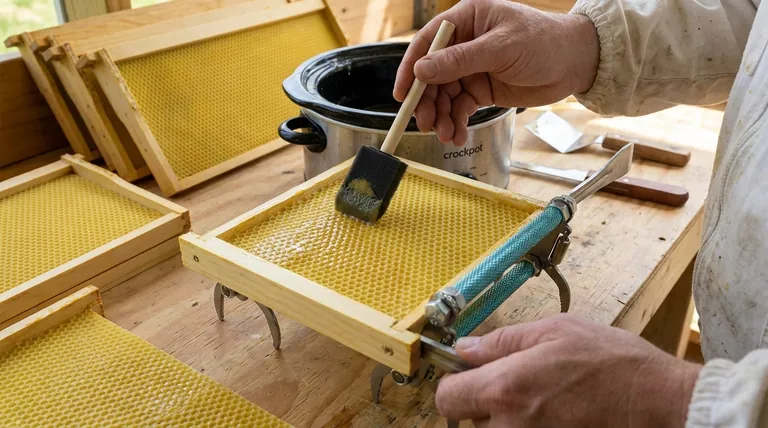
Why the Foam Brush Method Excels
The superiority of the foam brush lies in its ability to solve the core challenge of waxing: applying the wax exactly where the bees need it most.
Precise Wax Placement
A foam brush naturally deposits more wax on the high points of the foundation—the embossed ridges of the cells. This is the precise area where bees begin to build.
The foam glides over the surface, concentrating the wax where it provides the most benefit as a building guide.
Prevents Filling Cells
The biggest mistake in waxing is allowing melted wax to pool in the bottom of the cells. If the cells are filled, the bees must waste time and energy cleaning them out before they can build.
The foam brush method makes it very easy to apply a light coat that avoids this common problem.
Efficiency and Control
This method is fast, clean, and minimizes wax waste. You have direct control over how much wax is loaded onto the brush and transferred to the frame. A bristle brush, by contrast, can be messy and leave bristles behind in the wax.
The Step-by-Step Waxing Process
Achieving a perfectly waxed frame is straightforward when you follow a clear process.
Step 1: Melt the Wax Safely
Use a dedicated slow cooker or crockpot on a low setting to melt your beeswax. This maintains a consistent temperature without overheating.
Never leave melting wax unattended, as it is flammable at high temperatures.
Step 2: Master the Application Pattern
Dip your foam brush into the melted wax, allowing any excess to drip off.
Apply the wax to the foundation using a specific, multi-directional pattern to ensure even coverage on all ridges:
- Brush across the foundation in the long direction.
- Brush again in the short direction.
- Finish with passes along both diagonals.
Step 3: Judge the Final Coat
A properly waxed frame will have a visible, thin sheen of fresh wax. You should be able to clearly see the defined cell pattern.
The frame should not be dripping, and there should be no pools of wax in the cell bottoms. The goal is a guide, not a thick coating.
Common Pitfalls to Avoid
While the process is simple, a few common errors can undermine your efforts. Understanding them is key to ensuring your frames are accepted by the colony.
Mistake: Using Too Much Wax
Applying wax too heavily is the most frequent mistake. It wastes your valuable beeswax and creates more work for your bees, who will have to remove the excess from the cell bases.
Mistake: Overheating the Wax
If the wax is too hot, it will be very thin and may run off the ridges before it can solidify. It can also pose a significant fire hazard. A gentle, low heat is all that is required.
Mistake: Ignoring Wax Quality
Always use clean, pure beeswax. Old, dark, or contaminated wax may contain hive debris or pathogens and can be less appealing to the bees, slowing their progress.
Making the Right Choice for Your Goal
Your approach should be guided by your specific objective, whether you are preparing new equipment or maintaining existing frames.
- If your primary focus is preparing new plastic frames: The foam brush method is the ideal way to add the essential beeswax scent and texture that encourages a colony to accept and rapidly build upon the foundation.
- If your primary focus is revitalizing old, drawn frames: A light re-coating with a foam brush can replenish the wax scent, encouraging bees to reuse and repair old comb more readily.
By using this simple and controlled method, you provide your bees with the perfect canvas to do their remarkable work.
Summary Table:
| Step | Key Action | Purpose |
|---|---|---|
| 1 | Melt wax in a slow cooker on low heat | Ensures safe, consistent temperature; prevents overheating. |
| 2 | Apply with a foam brush in a cross-hatch pattern | Deposits wax on cell ridges without filling cell bottoms. |
| 3 | Aim for a thin, visible sheen | Provides a guide for bees, encouraging rapid comb drawing. |
Equip your operation for success with HONESTBEE.
Perfectly waxed frames are the foundation of a productive hive. As a trusted wholesale supplier for commercial apiaries and beekeeping equipment distributors, HONESTBEE provides the high-quality supplies—like pure beeswax and durable frames—you need to work efficiently and effectively.
Let's discuss how our wholesale-focused solutions can support your scale and profitability.
Contact our team today for pricing, product catalogs, and partnership inquiries.
Visual Guide
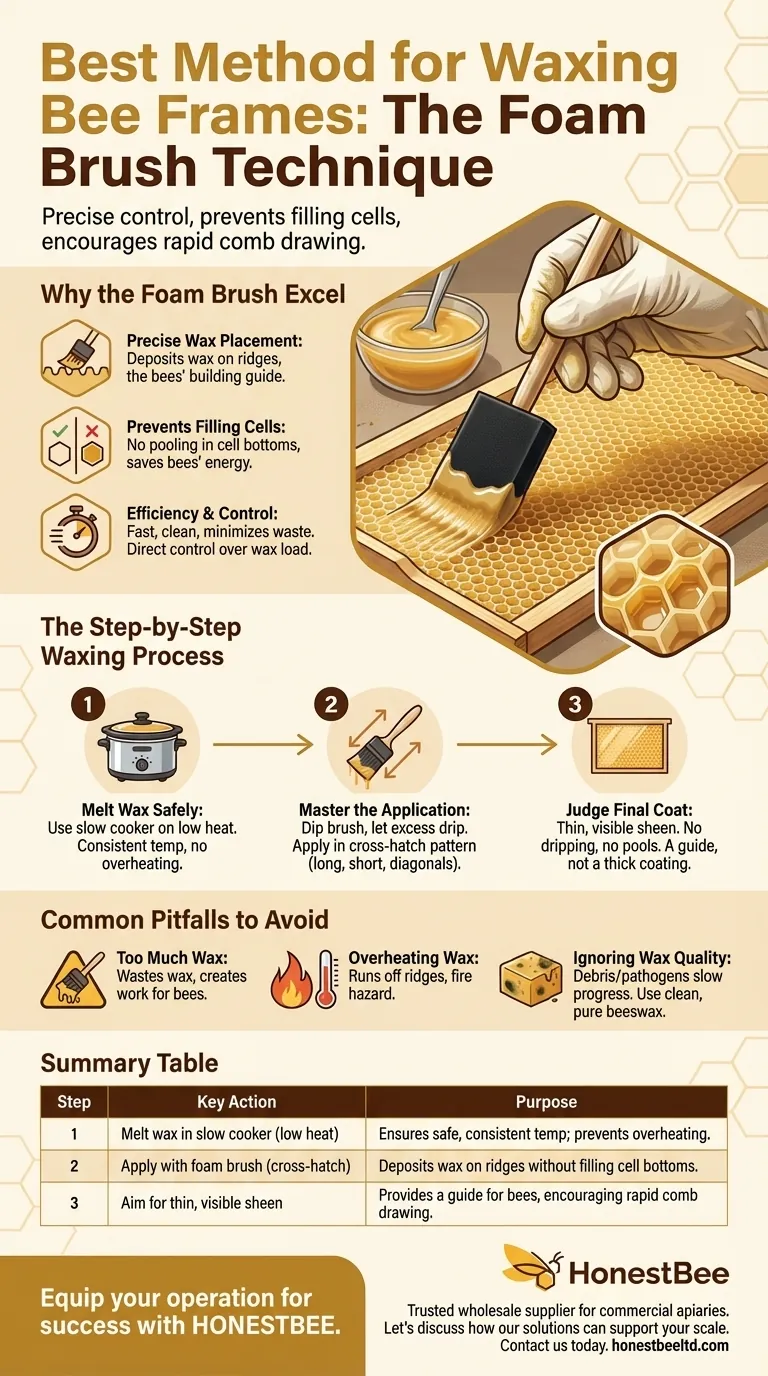
Related Products
- Professional 3-Bar Frame Grip with Integrated Hive Tool
- Professional Stainless Steel Pry-Bar Hive Tool
- HONESTBEE Professional Long Handled Hive Tool with Precision Cutting Blade
- Semi-Auto Bee Frame Assembly and Stapling Machine for Bee Frame
- Professional Honey Uncapping Roller for Efficient Harvesting
People Also Ask
- What parts of bee equipment should be painted? A Guide to Protecting Your Hive and Your Bees
- What are the benefits of using Frame Grips in beekeeping? Boost Efficiency & Protect Your Hive
- What is required to be a beekeeper? Essential Equipment, Knowledge & Mindset
- What are Frame Grips used for in beekeeping? Boost Your Hive Inspection Efficiency & Bee Safety
- Why is proper beekeeping equipment important? Essential for Safety and Hive Health

